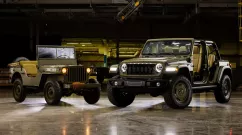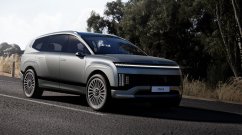The first commercially available car hit the roads in 1908 when Ford released the Model T, and over the next 114 years, we’ve seen car ownership become more common than ever before.
Not only have the looks of the cars evolved over time, but the technology inside them has become a lot more sophisticated. This, in turn, has improved the quality of life behind the wheel, but how much have things really changed?
In this article, Jardine Motors go through the history of the technology in cars, and how it’s continued to change and evolve to make them safer and easier to operate. We’ll also consider what the future could hold for car tech evolution.
The early years – starting, suspension, & smoking
One of the earliest technological advancements made in cars was the shift away from using hand cranks to electric ignition starters around 1912. First introduced on a Cadillac, this transition was inspired to prevent the number of injuries that could be caused by the car backfiring. This includes wrists being twisted into unnatural positions and even resulting in broken jaws. The innovation for cars to be started by keys wouldn’t come until 1949 when Chrysler introduced the solution to their vehicles.
The next evolution that helped cars drive more efficiently was the introduction of coil spring suspension, which came in 1934. Initially employed on both leading wheels of the vehicle, before being added to all four, it worked to absorb the shock of bumpy roads. This allowed for a much smoother journey and became standard for years to come.
What’s interesting is before this technology was added, which arguably makes driving so much safer than before, there were several changes to reflect the needs of the driver. However, these weren’t safety features, and were instead cigarette lighters in the early 1920s and the first in-car entertainment with radios in the 1930s.
Safety first – seatbelts, braking, & pollution reduction
Seatbelts are very important to car safety. With how safe they are, it might surprise you to learn they weren’t introduced to vehicles until 1959, when Volvo announced them in all their cars going forward. This means they were first implemented after the Chrysler Imperial introduced motorists to air conditioning.
From then, they became a necessity to be installed on every seat in a car. Within the time between the invention of the seatbelt and wearing them becoming a legal requirement while in motion, the world of motoring was introduced to a number of new advancements that are all commonplace in modern cars. These include electric windows, catalytic converters, intermittent windscreen wipers, and cassette deck systems.
Braking is another system that is vital to car safety, and making sure the car doesn’t break during sharp emergency stops can be the difference between crashing and staying safe. Anti-lock braking systems (ABS) were first conceptualised in the 1920s and became standard issue in cars from the 1990s.
The present, the future, and beyond!
Moving into the present and the future, one of the most important changes to the cars that are commercially available is what is used to power them. Over the past two decades, we’ve seen huge leaps taken in the development and production of electric vehicles (EVs) and hybrids, like the new Jaguar E-Pace.
The more EVs that go from the showrooms to the roads will more likely lead to further advancements in the battery technology associated with them.
Artificial intelligence (AI) and automation are also making their way into the motoring industry, with conversations around whether computer-generated algorithms could help make driverless cars a viable option for the roads. This could help give people with disabilities or older generations who need to travel so they can get to destinations without needing to rely on taxis or public transport.
With how fast technology evolves, there may be tech in development currently for cars that we can’t even conceptualise. Beyond the ideas of vehicles that double for roads and flying, there might be manufacturers looking to incorporate things like AI in ways to make this new futuristic tech a must-have in future vehicles.






















